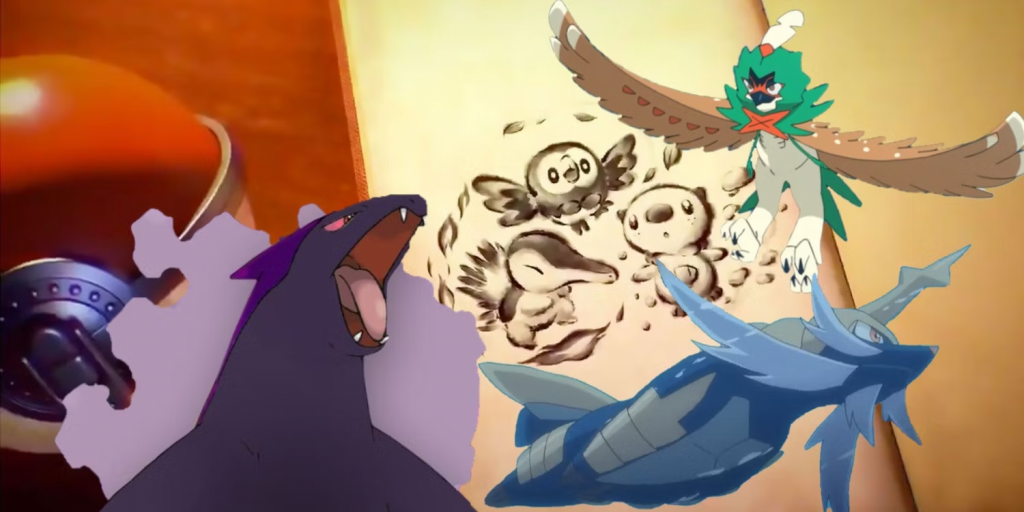
Pokemon Scarlet and Violet’s Teal Mask DLC has delighted long-time fans of the franchise by bringing them to a new, yet familiar setting. Since the release of Black and White in 2010, the mainline Pokemon games have explored regions inspired by various countries. However, the Teal Mask DLC takes players back to Japan, where the franchise first began.
The Pokemon series initially introduced players to the Kanto region, inspired by Japan’s Kanto Region. It then ventured to Johto and Hoenn, based on the Kansai region and Kyushu island, respectively. The Sinnoh region drew inspiration from Hokkaido, and Unova and Alola took players to the United States. Kalos and Galar were inspired by France and the United Kingdom. In the latest installment, Pokemon Scarlet and Violet, the game is set in Paldea, which is based on Spain’s Iberian Peninsula. However, the new DLC brings players back to Japan, creating a sense of nostalgia.
The Teal Mask DLC in Pokemon Scarlet and Violet takes players on a school trip to Kitakami, a serene land known for its rice paddies, apple orchards, and mountains. The scenery evokes memories of the parks, farmlands, and mountain ranges from previous games such as Johto and Hoenn. In this DLC, the characters, including the player, don traditional Japanese clothing resembling kimonos, similar to the costumes in Pokemon Legends: Arceus. This blending of familiar elements with fresh content evokes a sense of magic and nostalgia for long-time players while introducing new trainers to the charm of older Pokemon games.

The setting of Kitakami in the Teal Mask DLC bears similarities to the real-life Kitakami in the Iwate prefecture of Japan. The tranquil town is surrounded by farmland and mountains, reminiscent of the DLC’s depiction. The apple orchards featured in the DLC may be a reference to Morioka, another city in the prefecture known for its apple trees. The presence of a towering mountain in the area also aligns with the Kitakami mountain range that spans across Iwate, Aomori, and Miyagi prefectures.
The trailer for the DLC showcases a village that resembles the Michinoku Folklore Village in the city. This village houses over 40 heritage structures, including a school, open-air theater, homes, and a folk material museum. The museum displays various clothing, tools, and footwear from different historical periods, making it an ideal setting to explore Japanese folklore in Pokemon.

The trailer also introduces three new Pokemon: Okidogi, Munkidori, and Fezeandpiti, which are depicted as statues of a dog, monkey, and pheasant. These animals are featured in a Japanese story called “The Tale of Momotaro,” where they assist a child in defeating a gang of ogres. The DLC’s legendary Pokemon, Ogerpon, is likely the main antagonist, as its name is a play on the word “ogre.”
The Pokemon franchise has a history of incorporating local and foreign mythology into its creature designs. Infernape (based on Sun Wukong) and Ninetales (based on Kitsune) are examples of this practice. However, the Teal Mask DLC appears to take it a step further by integrating Japanese folklore into its storyline. This choice feels fitting, as it marks the first time players revisit a Japan-inspired setting in the mainline games after a 15-year gap (excluding non-mainline entries like Legends: Arceus).
Pokemon Scarlet and Violet, including the Teal Mask DLC, are available for the Nintendo Switch.
We bring out some of the most well-known Pokemon Collection, all of which are available at reasonable costs. Visit our link now if you are interested in the Pokemon Collection


Dawn,Black,Serena,Rei,Lillie